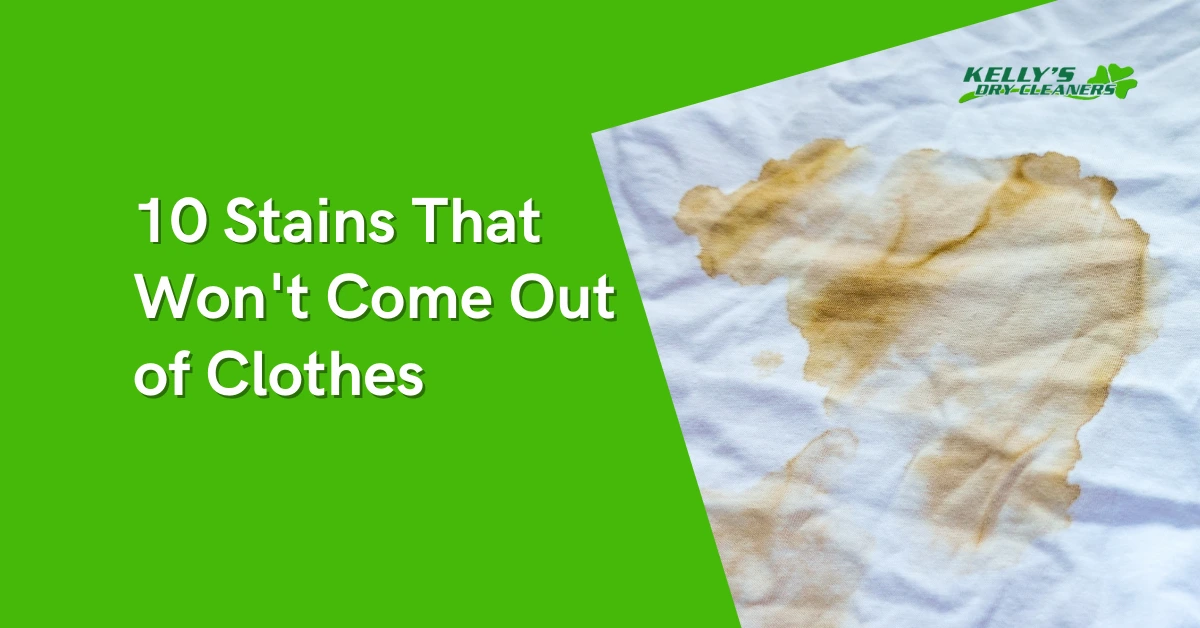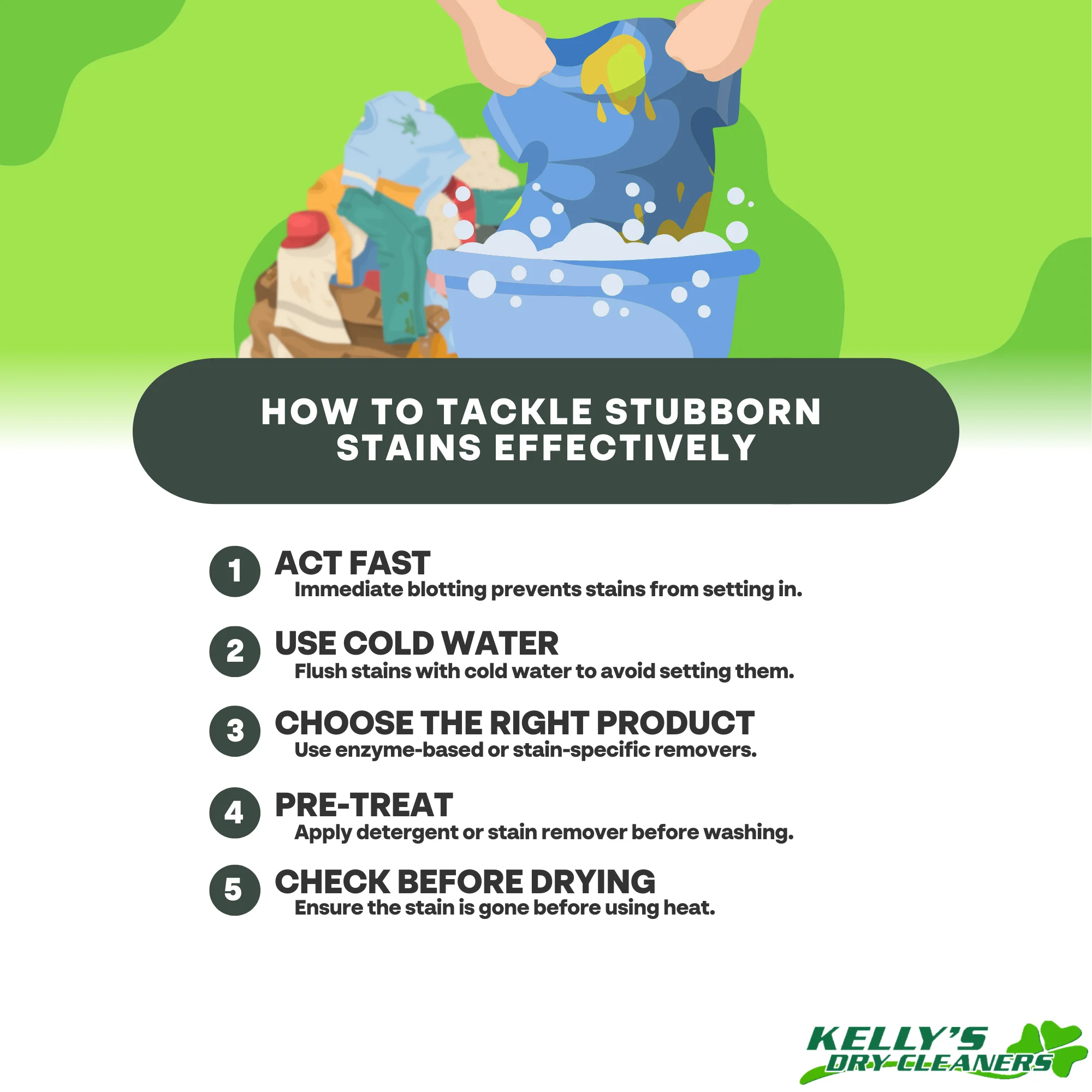Certain stains, like red wine, chocolate, and blood, can be incredibly stubborn and might seem like they’ll never come out of your clothes. Tomato sauce and ketchup also leave behind vibrant marks that are tough to erase. Fruit juices often stain light fabrics, while coffee creates greasy spots. Grease from cooking can cling to fabric, and ink stains from pens are notorious for their persistence. Meanwhile, perspiration can lead to discoloration if not treated promptly. To tackle these challenges effectively, you’ll want to follow specific treatment methods. Discover these methods and more options for tough stains ahead.
Key Takeaways
- Some stains, like red wine and chocolate, can become permanent if not treated immediately and effectively.
- Certain biological stains, such as blood and perspiration, are challenging and may leave marks despite prompt treatment.
- Grease and oil stains often resist removal, especially if they are not treated before washing.
- Ink stains can be particularly stubborn, frequently requiring specialized treatments to fully remove.
- Always check for stain visibility before drying; dried stains are often irreversible.
Tomato Sauce & Ketchup
When you’re cooking, you mightn’t realize how easily tomato sauce and ketchup can stain your clothes. These vibrant sauces can leave behind tough stains that seem impossible to remove.
However, knowing how to get rid of tough stains on clothes can save your favorite garments.
First, act quickly. Blot the stain gently with a clean cloth or paper towel to absorb excess sauce. Avoid rubbing, as this can push the stain deeper into the fabric.
Next, rinse the stained area under cold running water, allowing it to flow from the back of the fabric to the front. This helps to push the sauce out, rather than spreading it.
After rinsing, apply a stain remover or a mixture of liquid laundry detergent and water directly to the stain. Let it sit for about 5 to 10 minutes before washing the item in the hottest water safe for the fabric.
Always check the care label beforehand. If the stain persists after washing, avoid putting the clothing in the dryer, as heat can set the stain. Instead, repeat the treatment until the stain is gone.
With these steps, you’ll be better prepared to tackle those pesky tomato sauce and ketchup stains.
Blood
Blood stains can be particularly challenging to remove from clothing due to their protein content, which can bond with fabric fibers. To effectively tackle these stains, act quickly.
First, rinse the affected area with cold water as soon as possible. This helps to flush out the blood and prevents it from setting.
Next, apply a mild detergent directly to the stain, gently rubbing it in with your fingers. If you’re wondering how to get rid of tough stains on white clothes, consider using an enzymatic cleaner designed for protein stains. Let it sit for about 15 minutes before rinsing again.
For stubborn stains, you might want to create a paste using baking soda and water. Apply this paste to the stain, allowing it to sit for an hour. Afterward, rinse thoroughly with cold water.
If the stain remains, repeat these steps or soak the garment in cold water mixed with a small amount of hydrogen peroxide for about 30 minutes.
Always test any cleaner on a hidden area first to avoid damage. With persistence and the right approach, you can successfully remove blood stains from your clothing.
Red Wine
After tackling blood stains, you may find red wine spills to be another formidable challenge on your clothing. Red wine’s deep color can quickly set in, making it one of those tough stains that can ruin your favorite outfit.
But don’t worry; there are effective strategies to help you out.
First, act fast. Blot the stain gently with a clean cloth to absorb excess wine—don’t rub, as this can spread the stain.
Next, sprinkle salt onto the stain. The salt will absorb some of the wine. Let it sit for a few minutes before brushing it off.
If you’re wondering how to get out tough stains on clothes, consider using a mixture of hydrogen peroxide and dish soap. Apply equal parts to the stain, let it sit for about 30 minutes, then rinse with cold water.
Alternatively, white wine can neutralize red wine stains—pour it directly on the affected area, then blot.
Chocolate
Chocolate stains can be particularly stubborn, often leaving a dark mark on your favorite garments. When it comes to tough stains on clothes, chocolate is one of the trickiest. The first step is to act quickly.
Gently scrape off any excess chocolate with a spoon or dull knife, being careful not to spread the stain further.
Next, flush the stained area with cold water to remove as much of the chocolate as possible. Avoid hot water, as it can set the stain.
After rinsing, apply a small amount of liquid laundry detergent directly to the stain and let it sit for at least five minutes. If you don’t have detergent on hand, you can create a paste using baking soda and water, applying it to the stain.
Once you’ve treated the stain, wash the garment in the hottest water safe for the fabric.
Before drying, check to see if the stain is completely gone; heat can set the stain permanently. If needed, repeat the treatment process until the chocolate is no longer visible.
Fruit & Fruit Juice
Fruit and fruit juice stains can be a real headache, especially when they leave vibrant marks on your clothes. These tough stains on white clothes can be particularly challenging, as the bright colors from berries, cherries, or citrus can stand out even more against a light background.
To tackle these stains effectively, act quickly.
First, blot the stain with a clean cloth to absorb as much liquid as possible without rubbing it in further. Next, rinse the affected area under cold running water, ensuring the water flows from the back of the fabric to the front. This helps push the stain out rather than deeper into the fibers.
After rinsing, apply a stain remover or a mixture of liquid laundry detergent and water directly to the stain. Let it sit for about 5-10 minutes. For stubborn stains, you might want to take into account using a solution of white vinegar and water.
Grass
When it comes to stubborn stains on your clothes, grass can be just as tricky as fruit juice. These vibrant stains often seem impossible to remove, but with the right approach, you can tackle them effectively.
Here’s how to remove tough stains on clothes caused by grass:
- Pre-treat the stain: Apply a stain remover or a mixture of liquid laundry detergent and water directly to the grass stain. Let it sit for about 10-15 minutes to break down the pigment.
- Rinse with cold water: After pre-treating, rinse the stained area with cold water to flush out the detergent and loosen the stain. Avoid hot water, as it can set the stain.
- Wash normally: Finally, wash the garment in the machine using the warmest water safe for the fabric. Check the stain before drying; if it persists, repeat the pre-treatment.
Coffee
Coffee stains can be notoriously stubborn, making them a common challenge for anyone who enjoys their daily brew. When you spill coffee on your clothes, the dark liquid quickly seeps into the fabric, creating tough grease stains on clothes that can seem impossible to remove.
To tackle these stains effectively, act quickly. Blot the area with a clean cloth to absorb excess liquid—don’t rub, as this can spread the stain. Next, rinse the fabric under cold water, allowing the water to flow through the back of the stain to push it out.
For persistent stains, apply a mixture of liquid laundry detergent and cold water directly to the stain. Let it sit for about five minutes before rinsing again.
If the stain remains, you might consider using a stain remover or a paste made from baking soda and water. Once you’ve treated the stain, wash the garment as per its care instructions.
Always check the stained area before drying; heat can set the stain, making it even tougher to remove. With prompt action and the right techniques, you can reclaim your clothes from those pesky coffee stains.
Grease
Grease stains frequently occur in kitchens, making them a common nuisance for anyone who enjoys cooking or dining.
Whether you’re frying food or dealing with oily dressings, these stains can be tricky to tackle.
Fortunately, you can remove stains from clothes effectively with the right approach. Here are three practical steps to help you out:
- Blot the stain: Use a paper towel or cloth to gently blot the grease stain. Avoid rubbing, as this can spread the grease further into the fabric.
- Apply a stain remover: Use a commercial stain remover or a mixture of dish soap and warm water. Apply it directly to the stain and let it sit for about 5-10 minutes. This helps break down the grease.
- Wash as usual: After treating the stain, wash the clothing item in the hottest water safe for the fabric. Check the stain before drying; if it’s still visible, repeat the process.
Ink
After tackling those stubborn grease stains, you might find yourself facing another common challenge: ink stains. These pesky marks can be a nightmare, especially if they’re from a pen or marker. For effective stain removal, it’s essential to act quickly. The longer you wait, the harder it becomes to lift the ink.
Start by placing a clean cloth under the stained area. Apply rubbing alcohol or hand sanitizer directly onto the ink stain. Blot gently with a cotton ball or cloth—don’t rub, as this can spread the ink. Continue blotting until you see the stain lift. Rinse the fabric thoroughly with cold water.
If the stain persists, mix a tablespoon of dish soap with two cups of cold water. Soak the stained area for about 30 minutes, then rinse again.
For stubborn stains, a commercial stain remover specifically designed for ink might be necessary. Always test any product on a hidden area first to avoid damage.
Perspiration
When you’re dealing with perspiration stains, it’s crucial to tackle them as soon as possible for the best chance of removal.
These stains can become stubborn if left untreated. Here’s how to get stains out of clothes effectively:
- Act Quickly: Rinse the stained area with cold water right away. This helps to lift the stain before it sets.
- Use a Stain Remover: Apply a pre-treatment stain remover or a mixture of baking soda and water directly to the stain. Let it sit for about 30 minutes to break down the oils and sweat.
- Wash Properly: Launder the garment in the hottest water safe for the fabric.
Check the stain before drying; if it persists, repeat the treatment.
Frequently Asked Questions
How Can I Prevent Stains From Setting In?
To prevent stains from setting in, act quickly—blot the stain instead of rubbing, rinse with cold water, and use a stain remover promptly. Always check care labels for specific fabric instructions before washing.
Are There Specific Detergents for Tough Stains?
Think of detergents as your stain-fighting soldiers. Yes, there are specific detergents designed for tough stains, often containing enzymes that break down stubborn grime. Look for those labeled as stain removers for best results.
Can I Use Bleach on Colored Fabrics?
You shouldn’t use bleach on colored fabrics, as it can cause fading and discoloration. Instead, opt for color-safe bleach alternatives or specific stain removers designed for colored clothing to maintain their vibrancy.
What Is the Best Way to Treat Old Stains?
Oh sure, just wave a magic wand to treat old stains! In reality, pre-soak with a stain remover, scrub gently, and wash in the hottest water safe for the fabric. Persistence wins the battle!
How Do Temperature and Water Affect Stain Removal?
Temperature and water affect stain removal considerably. Hot water can set certain stains, while cold water helps lift them. You should choose the right temperature based on the stain type for effective removal.
Conclusion
Now that you’re armed with knowledge about those stubborn stains, don’t let them defeat you. Picture your favorite shirt, free from the marks of yesterday’s mishaps—how great would that feel? Remember, acting quickly and using the right techniques can make all the difference. With a bit of patience and the right approach, you can reclaim your wardrobe and keep your clothes looking fresh and clean. Don’t let those stains win; take charge today!




